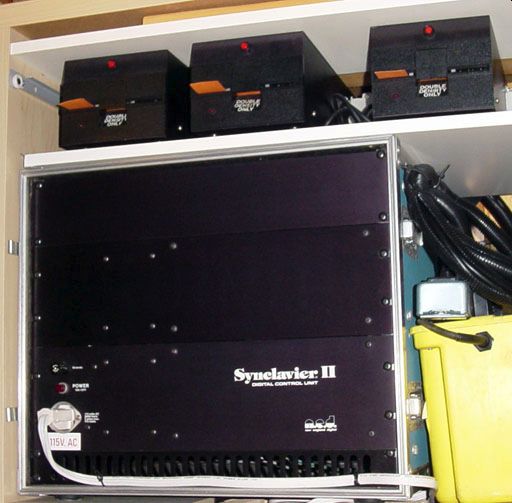While most synthesizers look like the piano, these musical instruments are more than what meets the eye. Their introduction significantly changed the face of popular music, as it allowed players to play any instrument they can imagine. Through the help of software, sequencers, and controllers, it integrates old sounds and modifies them in duration, frequency, timbre, and intensity. With that, different types of synthesizers were able to create fresh, undreamed music way beyond the capability and versatility of the traditional musical instruments.
Otamatone
Designed to be a toy, the Otamatone is a quaver-shaped electronic musical synthesizer developed in Japan. It is one of the country’s best selling portable synthesizers, which produces different sounds and pitches by making use of the toy’s head and stem. Squeezing and angling the head modifies the bass and intensity while sliding the finger on the stem with a ribbon controller, increases or decreases the tone of the sound. Changing the pressure and motion also alter the sounds, producing a “wah-wah” or vibrato effect. Meanwhile, switches are available on the back of the head for changing volume, shifting octaves, or turning it on or off. While it is more of a toy, some players transformed the Otamatone as an artistic instrument.
Synclavier
The Synclavier is a notable synthesizer first produced in the latter part of the 1970s to the early 1990s. It was an incredibly costly digital polyphonic sampling synthesizer made for sound designers, commercial studios, and most successful musicians. New England Digital Corporation released the first version in 1977 to 1978, which only featured synthesis modules and a computer. Two years later, a more advanced Synclavier II came with a lot more capabilities, such as a harmonic editing capability, multitrack sequencing, hard-disk recording, and music notation printing. It pioneered many of those features in the era, which is why it still prized today.
ANS Synthesizer
The ANS Synthesizer is a product of long years of contemplating the power of sound and light’s integration. It was developed by Yevgeny Murzin that employed the photo-optic technology used in cinematography to record sound images and use them to synthesize and generate sound through photo-optical sensors. The polyphonic ANS featured rotary glass disks that were brimming with 144 phonograms or the sound waves’ graphical representation. A light beam is then directed to the rotating disk creating a voltage tone equal to what has been represented in the disk.
Keytar Synthesizer
While it looks like a keyboard being played like a guitar, the Keytar is a synthesizer that surpasses what a traditional keyboard can do. Each of its keys can trigger musical sounds and notes, which is then modified through various controllers located on its neck. Some of the effects it can create include pitch bending, providing vibrato and portamento, and sustaining the sound. As a MIDI controller, the Keytar can also change lighting effects and control audio consoles and devices. This lightweight synthesizer has been popular as it has given more freedom to players to perform on stage, unlike typical keyboards that are often floor-mounted and heavy that restricts the user’s movements.
Fingerboard Synthesizer
The Fingerboard Synthesizer, or popularly known as the Continuum Fingerboard, is a synthesizer and controller developed by University of Illinois professor Lippold Haken from 1983 to 1997. It features a neoprene playing platform that is sensitive to pressure and touch, which is then connected to a MIDI synthesizer module. As the player touches the surface, it then plays the sound from the allotted MIDI value. As years passed by, more features were added to Continuum Fingerboard, improving its response time, and sound bending effects, giving its users better expression and creativity.
While its concept is simplistic, generating sound and altering it, synthesizers have become an integral part of the different sounds we have today. Through these instruments, musicians have delved into directions and brought it many stunning songs and productions. It’s no surprise to see more advancements and uses to happen to the synthesizers, shaping the face of music anew.

